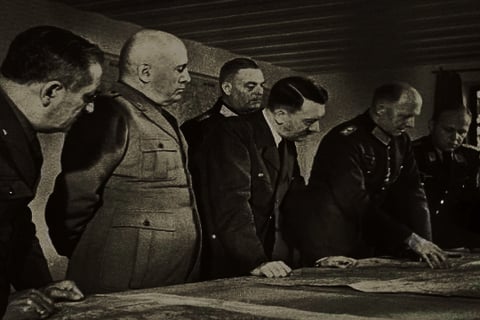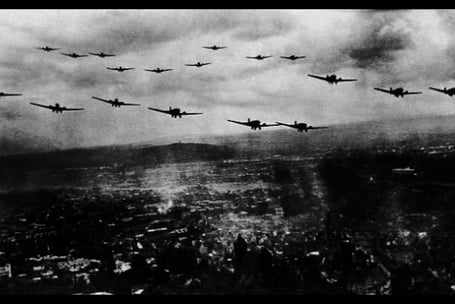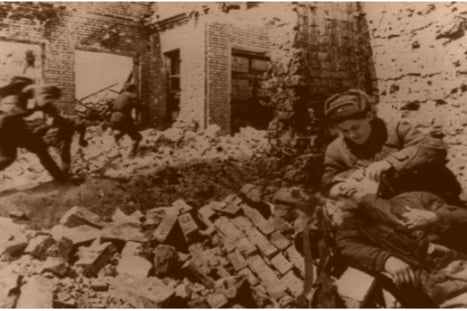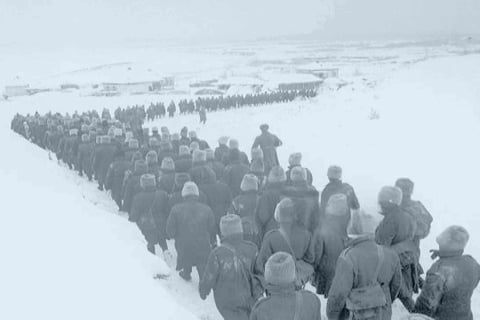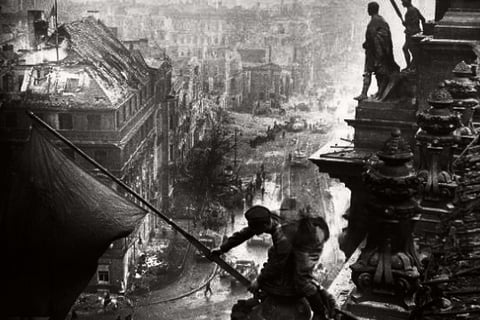The Battle of Stalingrad: How Soviet Resilience Defeated Hitler and Changed World War II
"Find out the epic tale of the battle of Stalingrad, the decisive clash that changed the course of world battle II. Learn how Soviet resilience, strategic brilliance, and the brutal winter halted Hitler's ambitions on the Eastern Front. This comprehensive analysis explores the key phases of the battle, including Operation Uranus, the encirclement of the German 6th Army, and the devastating human cost. Understand why Stalingrad is remembered as the turning point in the fight against Nazi Germany and how it shaped the outcome of the war. A must-read for history enthusiasts seeking in-depth insights into this monumental event."
Ahmad Shuja [shuji]
11/17/20245 min read
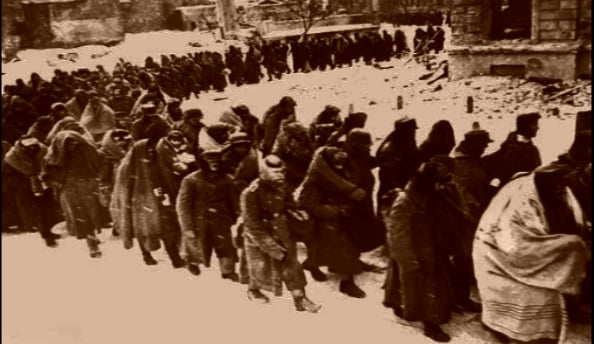

Introduction
Keywords: The Battle of Stalingrad, Eastern Front turning point, WWII key battles
The warfare of Stalingrad (July 17, 1942 – February 2, 1943) stands as a defining second in international struggle II and military records. This monumental clash between Nazi Germany and the Soviet Union not only changed the trajectory of the war but also symbolized the resilience and sacrifice of those who fought on the Eastern Front.
Fought over the strategic industrial city of Stalingrad (now Volgograd), the battle was marked by fierce urban warfare, immense casualties, and relentless Soviet determination. It ended with the decisive defeat of the German 6th Army, shattering Hitler’s expansionist ambitions and beginning the Nazi retreat from the Eastern Front.
This blog delves into the origins, strategies, brutal combat, and far-reaching consequences of this iconic battle, which forever altered the course of history.
Background: Why Stalingrad?
The significance of Stalingrad lay in its location on the Volga River, a vital transportation route for oil and other resources.Manage of the city could relaxed Germany's get right of entry to to the Caucasus oil fields and disrupt Soviet logistics. photo source : getty images [edited by us]
For Adolf Hitler, capturing Stalingrad held symbolic value as well. Named after Joseph Stalin, it was a personal challenge to the Soviet leader and a psychological blow to Soviet morale.
On the Soviet side, Stalin and his generals understood the stakes. Losing Stalingrad would compromise the USSR’s ability to resist the German advance and potentially collapse Soviet morale.
Operation Barbarossa: The Prelude
Keywords: Operation Barbarossa Eastern Front, German invasion Soviet Union
The seeds of the Battle of Stalingrad were sown in June 1941, when Hitler launched Operation Barbarossa, the largest military invasion in history. Initially, the German advance was swift and devastating, with Nazi forces capturing vast territories and inflicting severe losses on the Red Army.
However, by the summer of 1942, the tide began to shift. Hitler diverted his focus to the south, targeting the oil-rich Caucasus region and the strategically significant city of Stalingrad. This decision stretched German forces thin and set the stage for one of the bloodiest battles in human history.
The Combatants: Leadership and Armies
Keywords: German commanders Stalingrad, Soviet generals Eastern Front
German Forces: Led by Field Marshal Friedrich Paulus, the German 6th Army was a highly trained and disciplined force. Supported by Luftwaffe bombers, they initially overwhelmed Soviet defenses.
Soviet Forces: Under the command of Marshal Georgy Zhukov and General Vasily Chuikov, the Red Army demonstrated remarkable resilience. Chuikov’s leadership in urban warfare played a critical role in halting the German advance.
Both sides committed enormous resources to the battle, making it one of the largest and deadliest confrontations of World War II.
The Battle Begins: German Advances
Keywords: German offensive Stalingrad, early stages of battle
The German offensive commenced with heavy bombing with the aid of the Luftwaffe, lowering a great deal of Stalingrad to rubble. However, this destruction worked to the Soviets’ advantage, as the ruins provided natural defenses for guerrilla-style urban warfare.
German forces pushed into the city, but progress was slow and costly. Soviet defenders fought ferociously, employing tactics like close-quarters combat and sniper warfare to counter the German advance.
The Turning Point: Operation Uranus
Keywords: Operation Uranus counteroffensive, Soviet encirclement German 6th Army
On November 19, 1942, the Soviet Union launched Operation Uranus, a bold counteroffensive aimed at encircling the German forces in Stalingrad. Soviet troops targeted the weaker Axis flanks, manned by Romanian and Italian troops, achieving a breakthrough.
Inside days, the crimson army had encircled over three hundred,000 German and Axis troops in Stalingrad. The encirclement trapped the 6th Army without access to supplies or reinforcements, marking a turning point in the battle.
The Winter of Despair: German Collapse
Keywords: German defeat Stalingrad, winter conditions Eastern Front
As the harsh Russian winter set in, conditions for the encircled German forces deteriorated rapidly. Food, ammunition, and scientific materials ran out, and frostbite and starvation claimed thousands of lives. . photo source: getty images
Despite Hitler’s orders to hold Stalingrad at all costs, morale among German troops plummeted. On February 2, 1943, Field Marshal Paulus defied Hitler’s commands and surrendered to Soviet forces.
The Human Cost of Stalingrad
Keywords: casualties Battle of Stalingrad, Eastern Front devastation
The battle of Stalingrad become one of the bloodiest in human records, with expected casualties exceeding 2 million.
German and Axis losses: Over 800,000 killed, wounded, or captured.
Soviet losses: Approximately 1.1 million soldiers killed or wounded, along with countless civilian casualties.
The metropolis itself was left in ruins, with nearly 90% of its buildings destroyed.
Strategic and Psychological Impact
Keywords: impact of Stalingrad, WWII turning points
The victory at Stalingrad marked the beginning of the Nazi retreat from the Eastern Front. It boosted Soviet morale and proved that Hitler’s forces were not invincible.
Strategically, the battle forced Germany onto the defensive, allowing the Red Army to launch a series of offensives that would eventually push German forces back to Berlin.
Psychologically, the defeat shattered Hitler’s confidence and weakened his grip on power within the Nazi regime.
Lessons and Legacy of Stalingrad
Keywords: legacy of Stalingrad, lessons from WWII battles
The Battle of Stalingrad demonstrated the importance of resilience, strategic planning, and the ability to adapt to changing conditions. It highlighted the value of leadership, as both Chuikov and Zhukov played crucial roles in orchestrating the Soviet victory.
Today, the battle is commemorated as a symbol of sacrifice and determination. The Mamayev Kurgan memorial, featuring The Motherland Calls statue, stands as a tribute to those who gave their lives in defense of Stalingrad.
Conclusion
The Battle of Stalingrad was a turning point not only in World War II but also in the history of modern warfare. Against overwhelming odds, the Soviet Union halted Hitler’s advance, shifted the momentum of the war, and inspired hope for eventual victory among the Allied forces. FALL OF BERLIN 1945 PHOTO SOURCE: getty images
As one of the most iconic and impactful battles in history, Stalingrad remains a testament to the resilience of the human spirit and the sacrifices made in the fight against tyranny.
